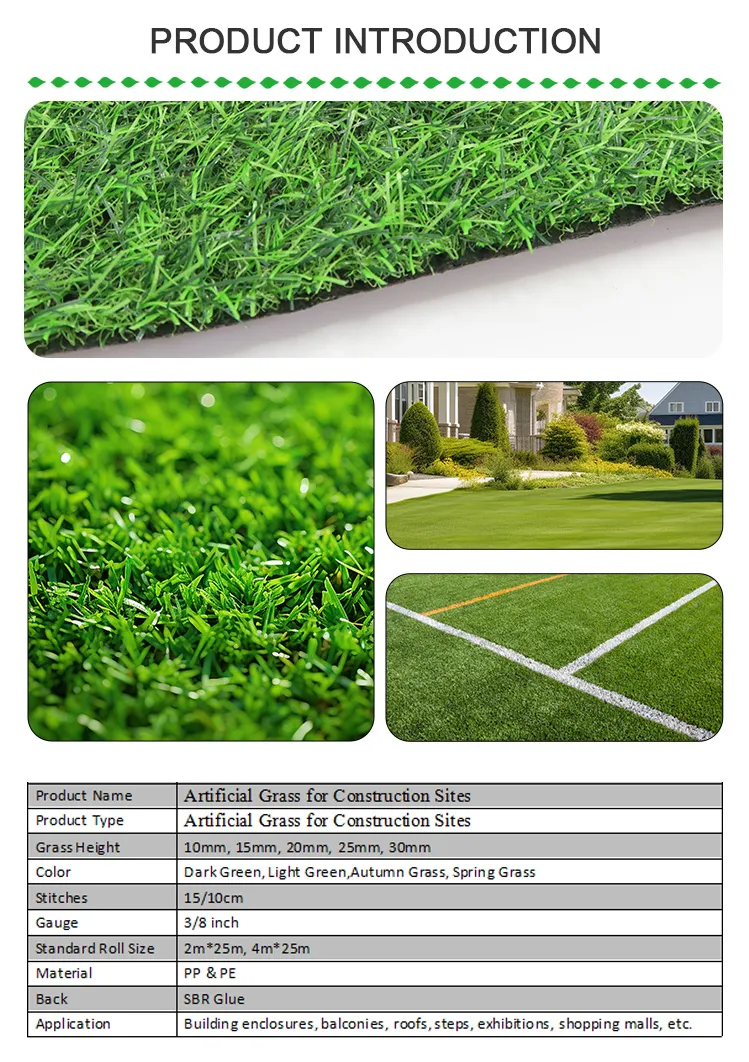
- Afrikaans
- Arabic
- Belarusian
- Bengali
- Czech
- Danish
- Dutch
- English
- Esperanto
- Estonian
- Finnish
- French
- German
- Greek
- Hindi
- Hungarian
- Icelandic
- Indonesian
- irish
- Italian
- Japanese
- kazakh
- Rwandese
- Korean
- Kyrgyz
- Lao
- Latin
- Latvian
- Malay
- Mongolian
- Myanmar
- Norwegian
- Persian
- Polish
- Portuguese
- Romanian
- Russian
- Serbian
- Spanish
- Swedish
- Tagalog
- Tajik
- Thai
- Turkish
- Turkmen
- Ukrainian
- Urdu
- Uighur
- Uzbek
- Vietnamese
Installing Artificial Grass for Dogs to Keep Your Yard Clean and Green
Nov . 09, 2024 21:16 Back to list
Artificial Grass Installation for Dogs A Comprehensive Guide
As pet owners, we want the best for our furry companions, and that includes providing them with a comfortable, safe, and inviting environment. One increasingly popular choice among dog owners is artificial grass. Not only does it offer a clean and low-maintenance alternative to natural grass, but it also provides a durable and pet-friendly surface that can withstand the rigors of daily play. This article will explore the benefits of artificial grass for dogs, the installation process, maintenance tips, and considerations to keep in mind.
The Benefits of Artificial Grass for Dogs
1. Durability Natural grass can easily become worn and patchy from your dog's activities, especially if they love running, digging, or playing fetch. Artificial grass, however, is designed to withstand heavy use without showing signs of wear and tear, making it an excellent long-term investment for pet owners.
2. Cleanliness One of the primary concerns for dog owners is managing messes. With artificial grass, cleanup is straightforward. Dog waste can be easily picked up, and the grass can be hosed down or cleaned with a mild detergent. Unlike natural grass, it doesn’t retain odors, providing a fresher environment for you and your pets.
3. Pest Control Natural lawns can attract pests such as fleas and ticks, which can be a nuisance for pets. Artificial grass doesn’t offer the same appealing habitat for these insects, thereby reducing the likelihood of infestations.
4. Allergen Reduction For dogs with allergies, artificial grass can be a great alternative to natural grass, which can often harbor pollen and other allergens. This can help create a more comfortable outdoor space for your pets.
5. Consistent Surface Artificial grass provides a uniform and level surface for your dogs to play on, reducing the risk of injuries that are more common on uneven or muddy surfaces.
Installation Process
The installation of artificial grass requires careful planning and execution to ensure a safe and secure environment for your dogs. Here’s a step-by-step guide
1. Measure the Area Begin by measuring the area where you want to install the artificial grass. This will help you calculate how much material you’ll need.
artificial grass installation for dogs

2. Prepare the Ground Remove any existing grass or vegetation, along with debris, rocks, and roots. You’ll want a smooth, flat surface to work with.
3. Create Drainage Depending on your area, you may need to install a drainage system to prevent water from pooling on the surface. This can include a layer of crushed stone or specific drainage tiles.
4. Lay a Base A solid base is essential for stability. Spread a layer of crushed stone or decomposed granite and compact it firmly to create a strong foundation.
5. Install the Artificial Grass Roll out the artificial grass over the prepared area. Use a utility knife to cut it to fit, ensuring that the seams are tightly joined. Secure the edges with stakes or adhesive as needed.
6. Infill and Brush Some artificial grasses require an infill material (typically silica sand or rubber granules) to help keep the blades upright and simulate a more natural feel. Brush the grass to even out the infill and achieve a more realistic appearance.
Maintenance Tips
While artificial grass is relatively low-maintenance, a few routine tasks can extend its life and keep it looking great
- Regular Cleaning Remove any debris, leaves, or pet waste promptly. A light rinse with water can help to keep the surface clean and reduce odors. - Check for Damage Inspect the grass periodically for signs of wear or damage. Address any issues promptly to prevent them from escalating. - Grooming Use a stiff broom or rake to fluff the grass and maintain its upright position, especially in high-traffic areas.
Considerations
Before committing to artificial grass, consider the climate in your area, the specific needs of your dogs, and your overall landscape design. While it offers numerous advantages, it’s essential to choose the right type of artificial grass specifically designed for pet use to ensure durability, safety, and comfort.
In conclusion, installing artificial grass in your backyard can provide a beautiful, functional, and safe outdoor space for your dogs, making playtime enjoyable without the headaches associated with natural grass. With the appropriate installation and maintenance, it can enhance your home while keeping your pets happy and healthy for years to come.
-
The Benefits of Artificial Turf for Indoors
NewsJul.15,2025
-
How Artificial Grass Suppliers Ensure Quality Products
NewsJul.15,2025
-
Artificial Grass and Pets: A Space for Relaxation
NewsJul.08,2025
-
Balcony & Outdoor Decoration with Artificial Grass
NewsJul.08,2025
-
Best Indoor Artificial Grass for Home
NewsJul.07,2025
-
Best Pet Turf for Dogs: Safe & Durable Artificial Grass Options
NewsJul.07,2025
Products categories









